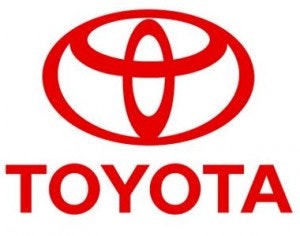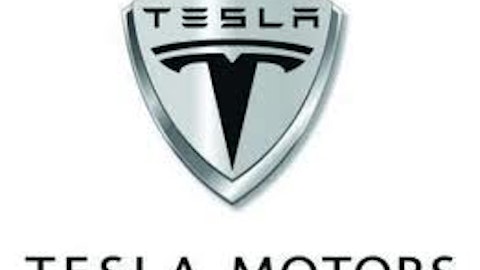
Toyota bouncing back from some troubled years
When analyzing Japanese automakers, Toyota Motor Corporation (ADR) (NYSE:TM) should be near the top of most investors’ lists. This corporation that focuses on designing, manufacturing, assembling, and selling passenger cars, minivans, and commercial vehicles brings in most of its revenue from Japan, Asia, Europe, and North America. It is also considered to be the world’s largest auto maker.
Toyota Motor Corporation (ADR) (NYSE:TM) has had its struggles over the past few years, though. In 2009 and 2010, the company amassed recalls due to a brake issue with its Prius model. Then, in 2011, the company felt the effects of both an earthquake and a tsunami.
This auto maker is expected to post a fiscal year operating profit in the range of 1.3 trillion Yen — or approximately $13.1 billion. This is very positive news for Toyota Motor Corporation (ADR) (NYSE:TM), as it will represent the first time since the recent financial crisis that the firm has surpassed the 1 trillion Yen mark.
In addition, Toyota Motor Corporation (ADR) (NYSE:TM)’s profits will also be nearly four times higher than the amount the company posted just one year prior — and an adjustment upwards of roughly 150 billion Yen from its February forecast.
Shareholders of Toyota Motor Corporation (ADR) (NYSE:TM) receive a dividend payout of $1.36 per share — equating to an annual dividend yield of 1.20%. While investor income may not be substantial, the company is expected to generate a compound growth in earnings of more than 20% for the next five years. Looking forward, this could provide investors with ample reward in terms of share price growth.
Honda is also keeping pace
Honda Motor Co Ltd (ADR) (NYSE:HMC) has also seen some growth over the past year or so. In addition to passenger vehicles, Honda is also known for its production of motorcycles and power products worldwide, as well as multi-utility vehicles. Through its retail dealers, Honda Motor Co Ltd (ADR) (NYSE:HMC) brings in additional revenue via its retail lending and leasing to customers, and by providing financing to its dealers.
Presently, Honda Motor Co Ltd (ADR) (NYSE:HMC) is planning to construct a new transmission plant in Mexico. While the cost of this facility is estimated to be in the neighborhood of $470 million, its initial capacity of 350,000 units is expected to quickly double to almost 700,000 within just a few years. The primary focus of the plant will be to build components for the Honda Motor Co Ltd (ADR) (NYSE:HMC) Fit product line — which includes the Fit hatchback and the Fit Crossover vehicle.
Honda Motor Co Ltd (ADR) (NYSE:HMC) recently announced its numbers for its fiscal fourth quarter, posting a rise in net profit of 5.80% over the same quarter one year prior. In addition, the company’s overall consolidated net sales rose by 14%, with a rise in its operating profit of 21%. In monetary figures, this equals sales of just over 12. 1 trillion Yen — up in excess of 22% overall.
Honda Motor Co Ltd (ADR) (NYSE:HMC)’s shareholders currently receive a dividend payout of $0.97 per quarter, per share, which equates to a yearly dividend yield of 2.40%. In addition to steady income, those who own the stock may also experience share price appreciation as the company expects its net sales and operating income to increase 22% and 43%, respectively in 2014.
Nissan is moving in the right direction
Nissan Motor (NASDAQOTH: NSANY)
is also turning its financials around, posting a rise in new car sales in China of 2.7% for April of 2013. This reverses a 17% fall in March. One potential catalyst for this could be that Nissan has been offering some hard-to-pass-up incentives for its new car buyers — including its scheme that guarantees a replacement vehicle in the event that a defect is discovered within 7 days of purchasing.The company has also revamped some of its dealer incentive programs in order to help increase sales.
Nissan, has focused on sales of its autos, light trucks, and related parts primarily in the U.S. and the U.K., as well as in Mexico. The company also produces industrial motor vehicles including forklifts and towing tractors. In addition to sales of vehicles and parts, Nissan also generates revenue through its financing services.
While Nissan shareholders do not receive regular dividend payouts, they have been well rewarded, as the share price is currently up more than 25% from its 52-week low. Some of this rise could be due to the recent multi-year high of the Nikkei, but as April car sales figure show an increase of more than 23.2% from the year-ago period, the share price could continue to rise even further over the next 12 months.
The bottom line
While the outlook appears good for all three automakers, one thing for investors to keep an eye on going forward is the increased quality of some of the U.S. made vehicles — especially in the mid-size market. Years ago, both the Toyota Motor Corporation (ADR) (NYSE:TM) Camry and the Honda Motor Co Ltd (ADR) (NYSE:HMC) Accord outsold their competition by quite a wide margin. Yet now, especially as the quality gap has narrowed between the Detroit Big Three and the Japanese automakers, it could be anyone’s game. In fact, in April 2013, Honda and Toyota Motor Corporation (ADR) (NYSE:TM)’s share of the U.S. mid-size sedan market dropped from 37% (reached in 2008) down to 28%.
While 28% is still a fair share, these companies may find themselves scrambling to create other ways of differentiation from the U.S.-made vehicles in order to catch consumers’ eyes — and wallets. Nissan has also not been immune to the competitive nature, as it has recently cut the price of its Altima by nearly $600, or 2.7%.
While it may only represent one area of the market, automakers must win over the buyers of mid-sized vehicles as this particular segment represents one-quarter of the entire light vehicle market. And, if translating that into a dollar figure, at an average price $25,000 per vehicle, that could mean $90 billion in business.
The article 3 Auto Makers That Could Roll Towards Additional Gains originally appeared on Fool.com and is written by Nauman Aly.
Copyright © 1995 – 2013 The Motley Fool, LLC. All rights reserved. The Motley Fool has a disclosure policy.
